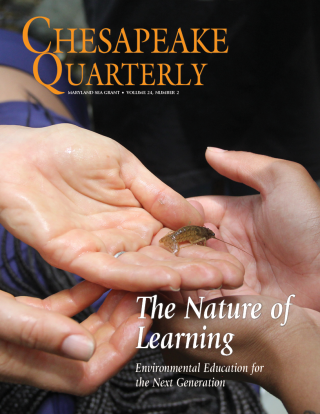The Maryland Sea Grant Bookstore will be closed for the winter holidays from Monday, December 15th to Friday, January 2nd and will not be taking orders during that time.
Spotted Salamander Symbiosis (5E Instructional Strategies)
School:
Maryland Sea Grant CollegeLesson Summary
Phenomenal phenological events are highly sought-after among naturalists, biologists, and other outdoor enthusiasts. Many of these events are at the center of classic learning strategies to teach about the natural world and have guided content and instructional strategies in textbooks and curriculum development. Classic examples include events like the life cycle of the monarch butterfly, flowers coming into bloom, and the migratory patterns of birds.
Driving Questions
How is a changing climate related to fragile ecosystems like vernal pools and how does that relationship impact biodiversity and, in particular, the spotted salamander?
Climate changes affect both the vernal pool and the spotted salamander in different ways. A warming climate may mean less winter precipitation which leads to smaller vernal pools. A warmer climate will stimulate earlier migration dates for the salamander with smaller available habitat for reproduction.
5E For This Lesson Plan
Engagement
Engagement
This activity captures the students' attention, stimulates their thinking, and helps them to access prior knowledge.
What's in a Name?
Students will:
- Visually examine images of three living organisms.
- Describe prominent physical characteristics of each organism.
- Explain how scientific names can relate to physical characteristics.
Exploration
Exploration
In this section students are given time to think, plan, investigate, collect and organize information.
Migrations
Students will:
- Analyze weather data sets.
- Use models to describe potential vernal pool locations.
- Use an interactive calendars to make predictions about spotted salamander migration.
- Make migration predictions for nearby vernal pool locations.
Salamander Spots: Patterned or Not?
Students will:
- Observe images of spot patterns present on spotted salamanders.
- Classify these patterns as alternate, opposite, or random.
- State a hypothesis for the spot pattern observed in terms of a null and alternate hypothesis.





